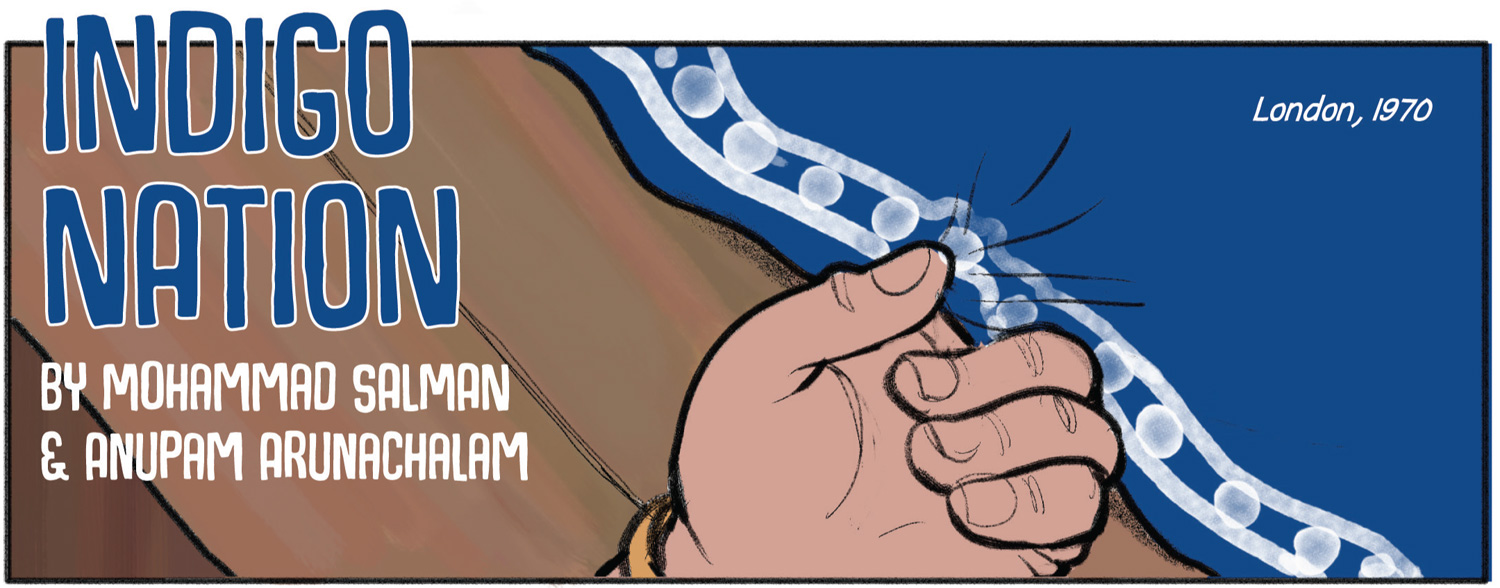
Vol 3 No 4 | Jan-Mar 2024
Indigo Nation
Story by Mohd Salman | Art by Anupam Arunachalam
Indigo: A pigment of the oppressive imagination
Marco Polo reported the cultivation of indigo in India as far back as the 1300s. Under British colonial rule, indigo became another of the many resources used to generate immense wealth at the expense of the people who cultivated it. The cruel tinkathia system appropriated vast tracts of arable land to grow indigo alone instead of essential food crops, often with very little compensation for the farmers involved. Powerful landowners were hand-in-glove with the British to meet the high demand for blue dye in European markets.
https://www.downtoearth.org.in/coverage/the-revival-of-indigo-16056
Champaran: An important episode in the Indian freedom struggle
Champaran was not the first indigo revolt in India. Nearly six decades prior to Gandhi arriving there, the nil bidroh of Bengal drew the first battle lines between indigo farmers and their oppressors. Their movement was vocally supported by the middle class. Dina Bandhu Mitra’s play Nil Darpan (Indigo Mirror), translated into English by Michael Madhusudan Dutt played a huge role in building national and international awareness of the indigo struggle.
Learn more about the Bengal Indigo Revolt through this episode of Bharat Ek Khoj, a timeless classic of Indian television:
Subsequent investigations by the government led to the conclusion that farmers in Bengal could not be forced to grow indigo, after which cultivation shifted more prominently to Champaran and other parts of modern-day Bihar.
The success of the Champaran satyagraha was an important milestone in India’s struggle for independence. It foregrounded non-violence as a powerful tool of resistance, and put farmers at the forefront of the fight for a new political reality.
https://thewire.in/history/champaran-satyagraha-centenary
Learn more about the Champaran Satyagraha here:

